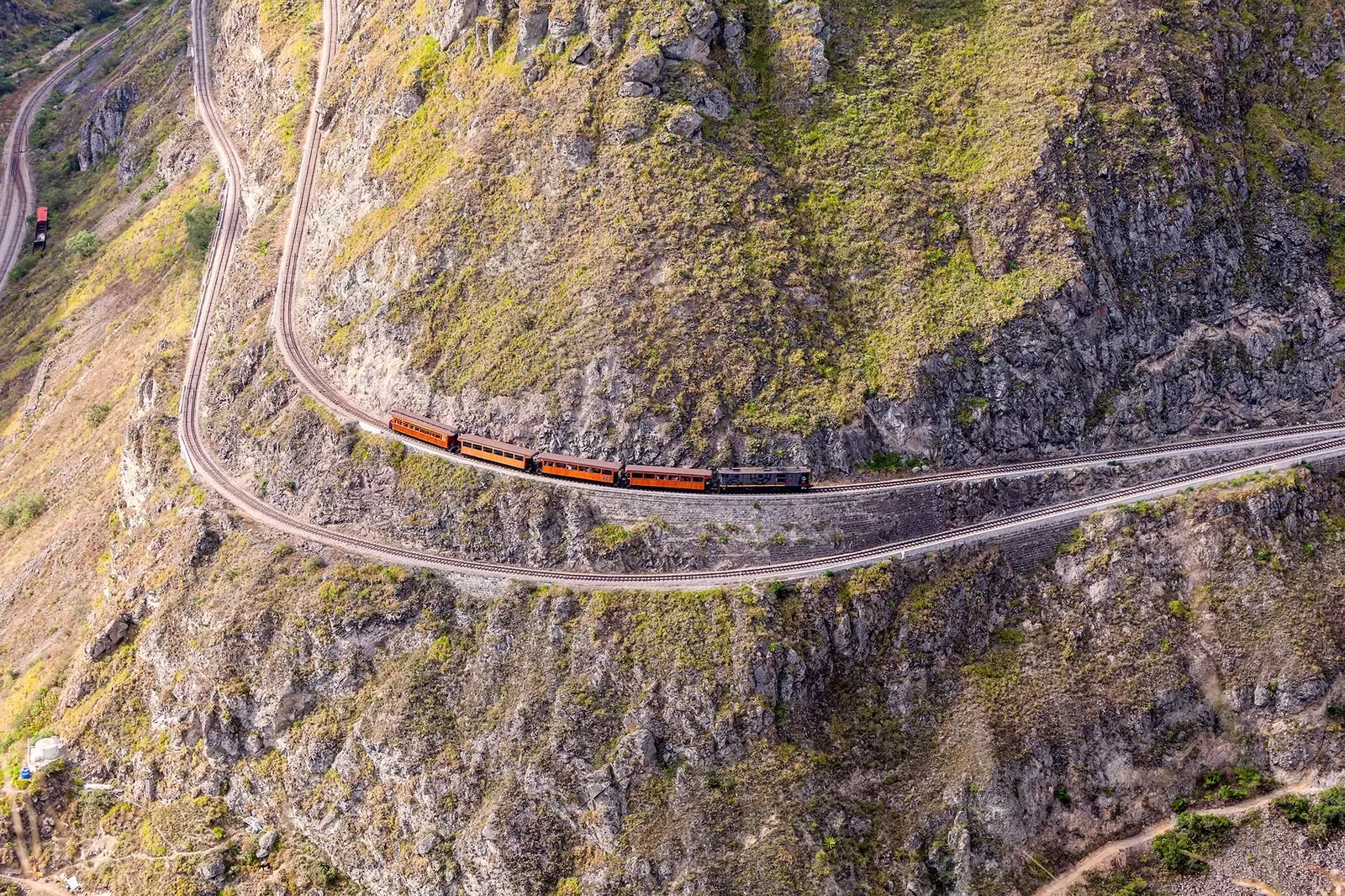
Would you like to cross the Andes mountain range?
From the window a gorge of more than forty meters of free fall. The playful rattle brings us, slowly but steadily, towards the abyss. Among the tourists, the nervous laughter that accompanies the moments of controlled tension.
A father takes a four-year-old boy in his arms with the air of Superman. The train cars are from the middle of the last century, fully restored.
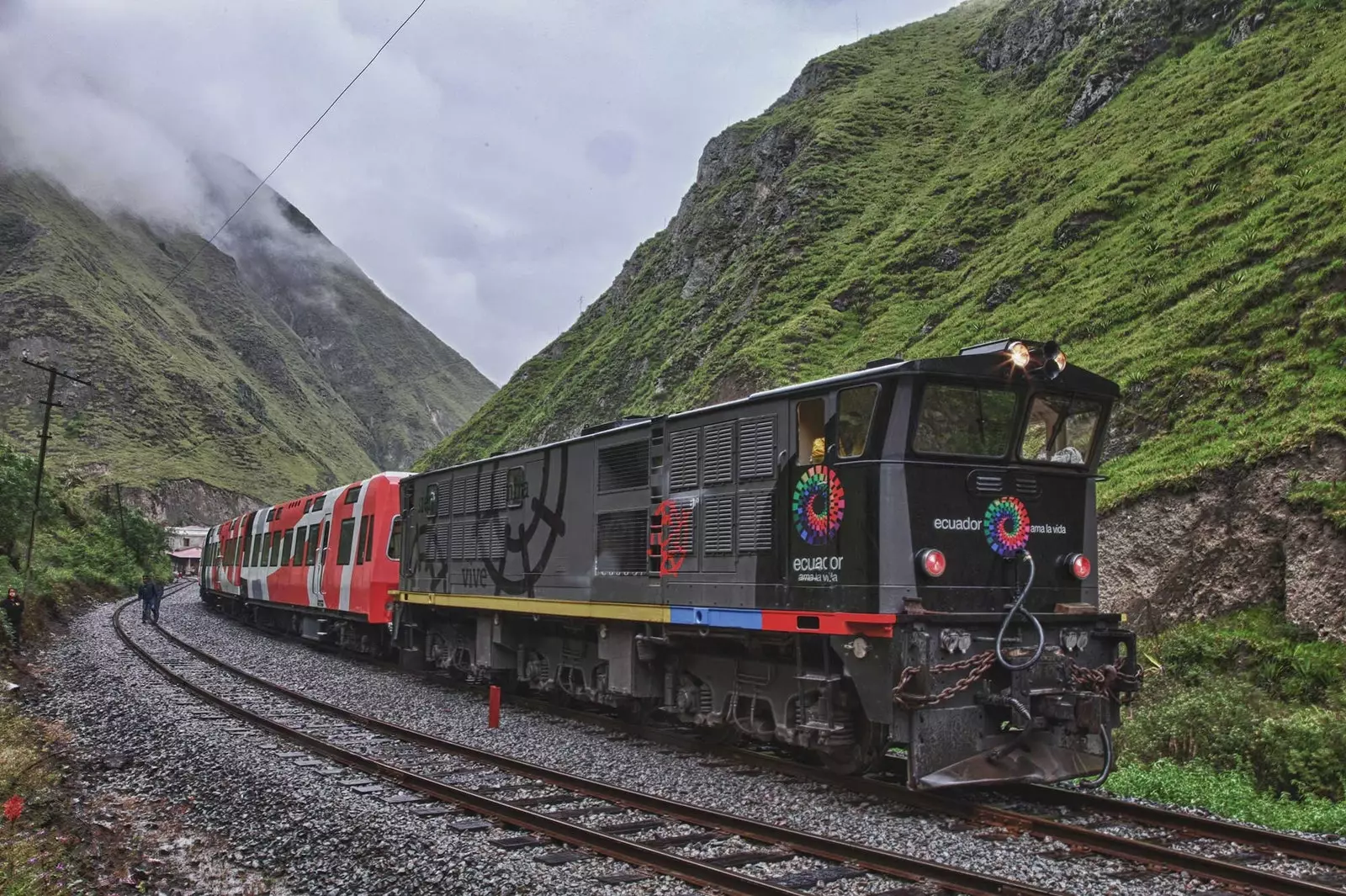
Devil's Nose Engine
Its interior is made of wood, with large windows that open with a simple latch; at the top there are some fabric nets, to leave belongings.
Even the tour guides wear fitted blue suit, matching a cap with a visor and metal plate, creating an atmosphere from another era, as if that train allowed us time travel.
The tourist excursion offered by the state company ** Tren Ecuador **, covers the section that goes from the town of Alausí to the Sibambe station.
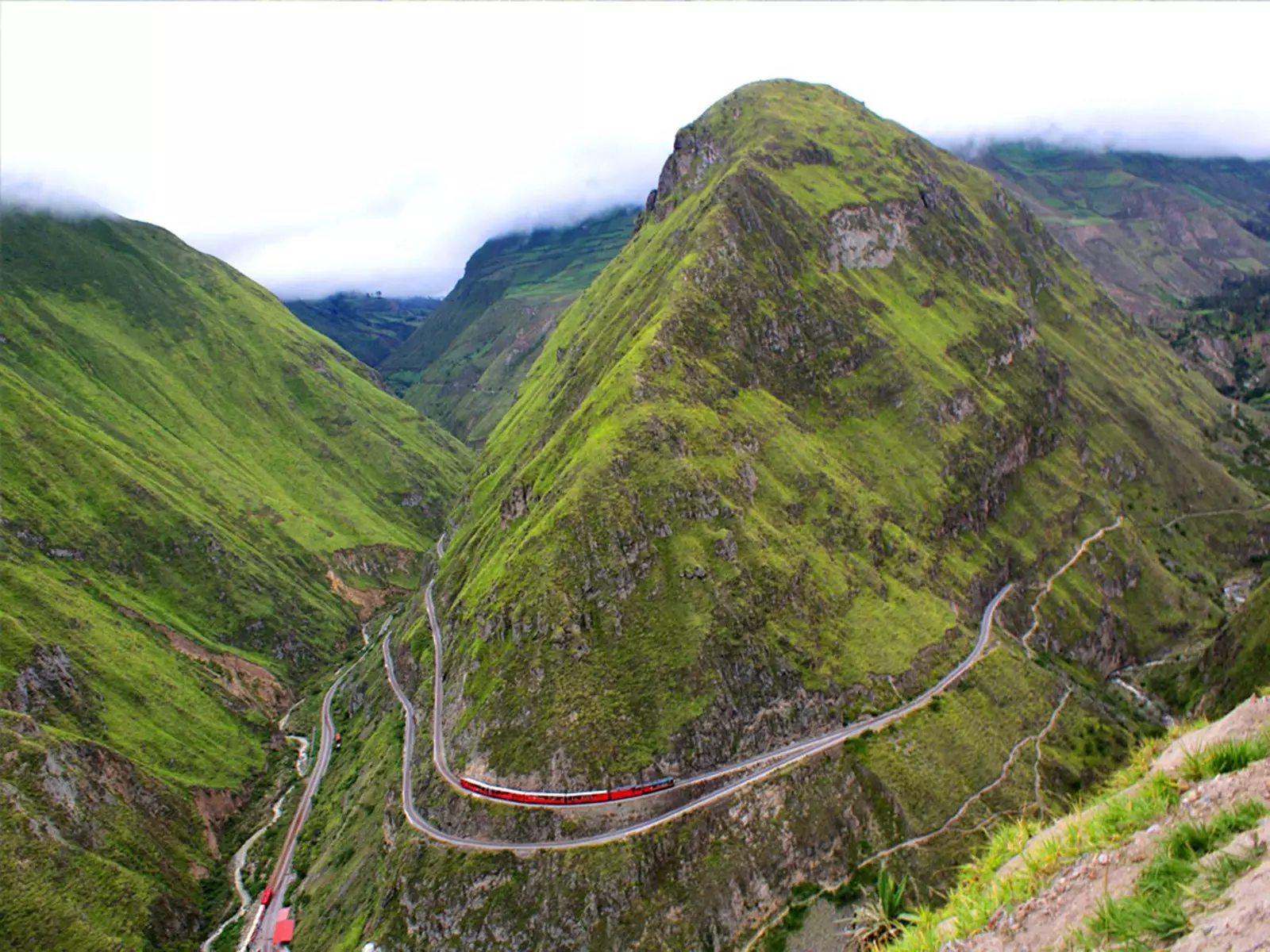
The tour is quite a spectacle
The journey lasts about 30 minutes , descending from the 2,300 meters above sea level , up to 1,800, overcoming a 500 meter drop, allowing the presence of various microclimates Along the way.
The devil's zigzag
The train continues through a winding track with deep gorges, crossing the mountain range The Andes , which now presents its most imposing face: large rock massifs, mountains covered with a green mantle, Andean scrub, cacti...
In the final part, and after passing some bucolic scenes winding through the flow of the Alangasí river , which lies at the bottom of a canyon, appears the famous Devil's Nose . Is about a gigantic triangular shaped rock reminiscent of a nose.
The only way to conquer it was through zigzag engineering design: the train goes down as far as the edge of the mountain allows it and it stops. An operator called a rattleman makes a maneuver and modifies the rail.
The train reverses and goes down another section. He repeats the maneuver and finally reaches the bottom of the mole.
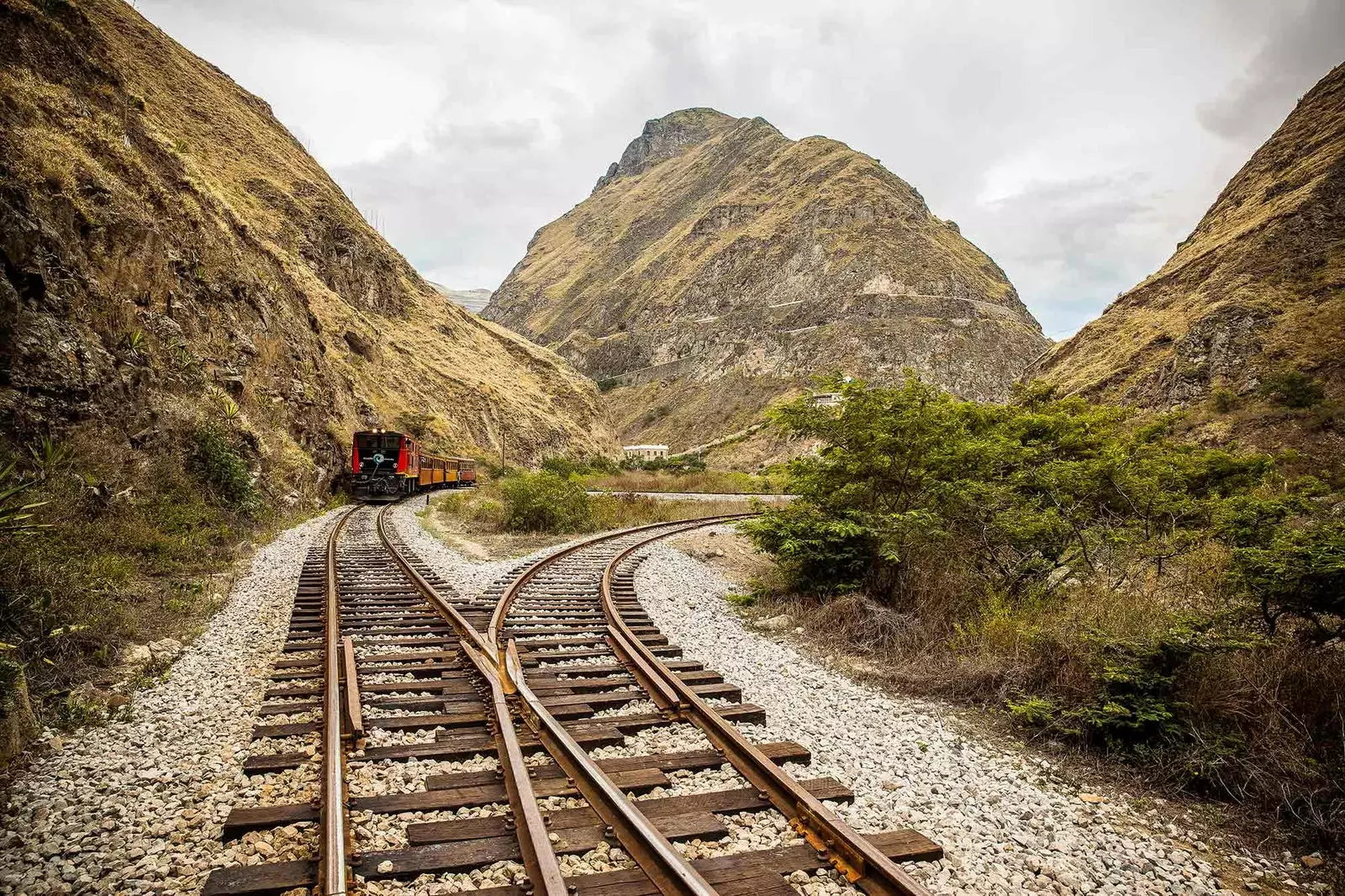
In the background, the Devil's Nose
It is only when you walk the path that you understand the herculean technical effort and the human sacrifice involved in this railway construction dating back to the early 20th century.
The spectator is perplexed, he does not know whether to look at the Andean landscape or pursue the engineering work in wonder.
Arriving at the station Sibambe , and after a deep breath, you can visit traditional houses made of adobe , see how a trapiche works from which you get sugar cane juice or try penco azul or shawarmishki, a plant similar to aloe, but with a sweet taste.
The women wear the traditional embroidered red skirt, with a white blouse and white hat. They explain that in this community women wear a single color sash and necklaces if they are single.
On the contrary, if they are married they wear these accessories, but in a multicolored version and a white hat, to indicate that they belong to the Chimborazo community , the highest mountain in the country.
There is no shortage of traditional dances and a souvenir stand with handicrafts, as the tourist canons of the region mandate.
The story behind
The historical context is essential to understand the greatness of this train.
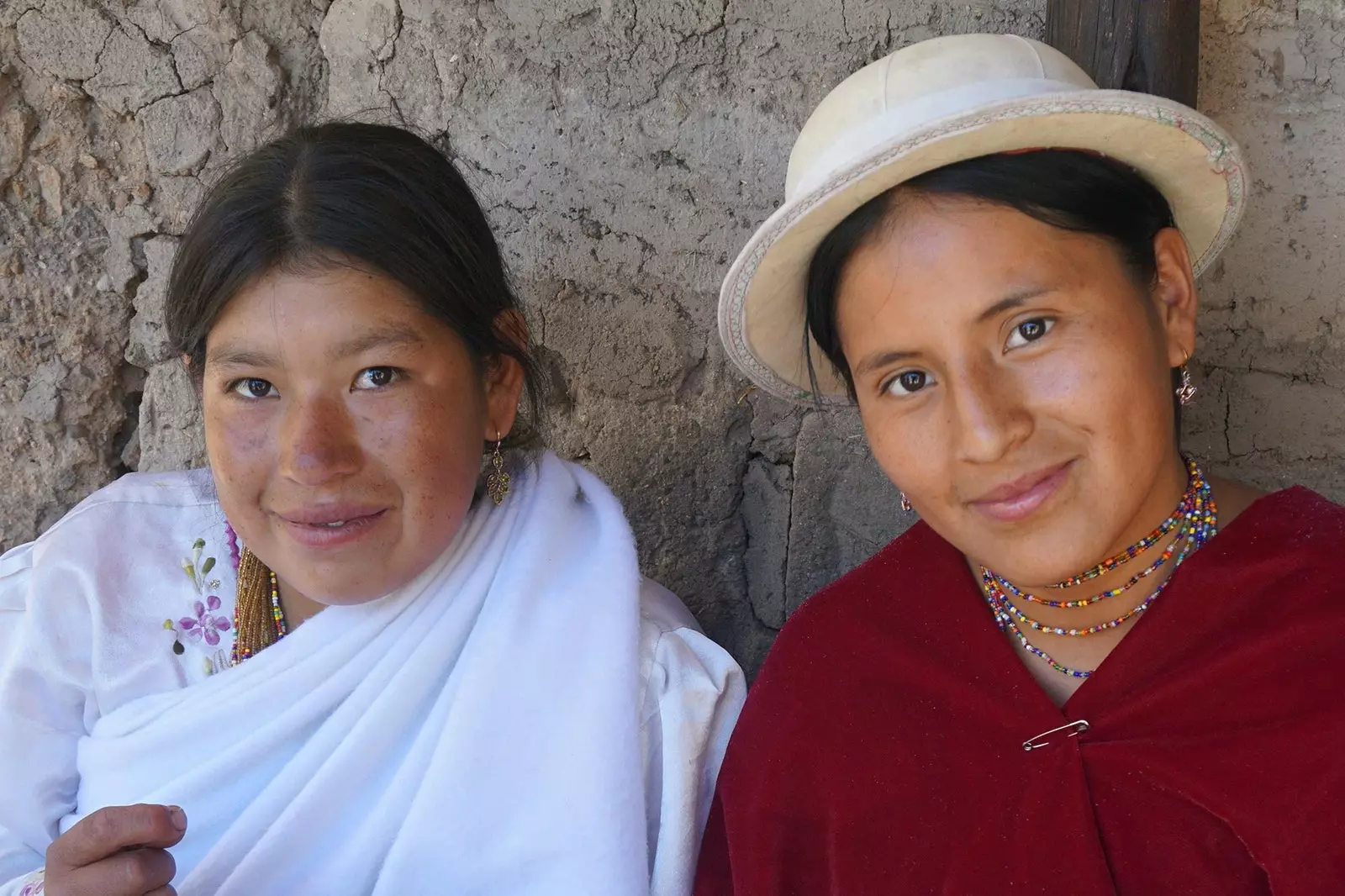
Women of the Chimborazo community
The Devil's Nose is a section of Transandean Railway -today called Tren Ecuador-, a line of 452 kilometers which at that time **connected Guayaquil**, the main port of the country, **with Quito**, the Ecuadorian capital located at 2,800 meters above sea level.
It was intended to boost the country's economy and become a symbol of progress and national unity. The first route was inaugurated in 1873 , during the presidency of Gabriel García Moreno.
After highly complex works and dealing with strong seismic activities and floods, locomotive number eight arrived on June 25, 1908 at the Chimbacalle station, south of Quito. It was quite a historical event.
In this titanic work of engineering, the most inaccessible section was the Devil's Nose, to such an extent that in its time it was known internationally as “the most difficult railway in the world” . The challenge to beat was a gigantic rock with a sharp profile.
Its name is largely due to the black history that accompanies it. To build just 13 kilometers of track, about 3,000 people -mostly Jamaican and indigenous- died during execution ; good for dynamite explosions, diseases, landslides, snake bites or deplorable working conditions.
To this day, the locals assure that some nights around Sibambe station screams can still be heard of the souls in pain of the deceased.
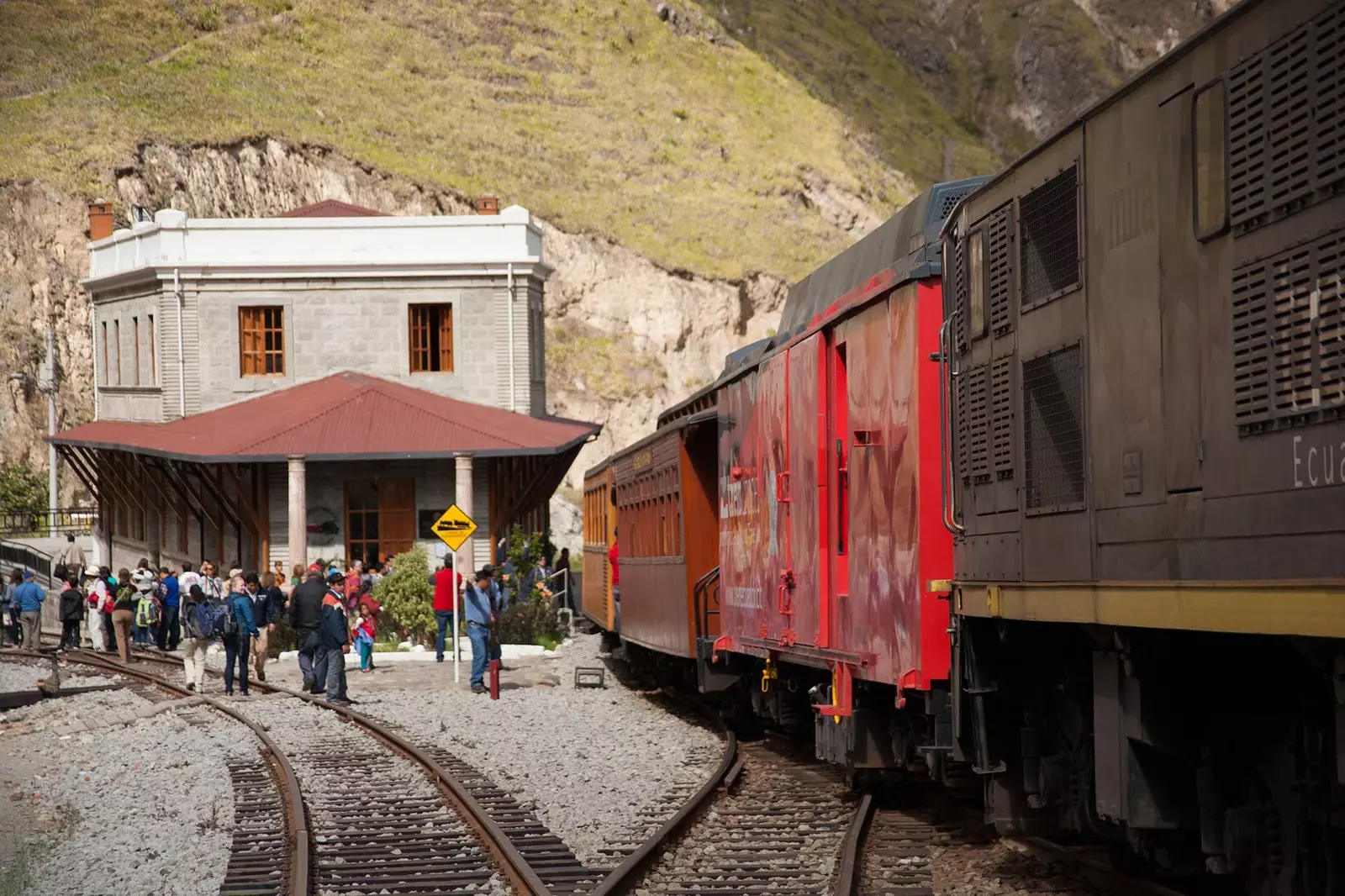
Sibambe Station
Alausí, a picturesque Andean town
Currently the only diabolical thing is the inclement sun that hits at noon during the summer period. Actually, it's about one of the best tourist excursions that can be done in the Ecuadorian Andes.
Alausi it's a picturesque town nestled in the Andes , with dozens of colonial houses with two floors and colored facades decorated with terraces.
The wide and well-kept town square, the imposing church and the town hall show the importance that Alausí had in the development of the economy of Ecuador .
If you visit Alausí , most likely you will from Quito. It is best to travel by private car or bus to the city of Riobamba , just three hours from the capital.
There you can spend the night and **enjoy its lively nightlife**, its cultural atmosphere and an exceptional heritage center, a kind of Alausí, but in a big way, more monumental and urban.
In this area of the country there is a great tradition of farms dedicated to sugarcane crops, cereals or cattle. Many of them have been converted into hotels . It is worth sleeping in one of them to immerse yourself in colonial Ecuador.
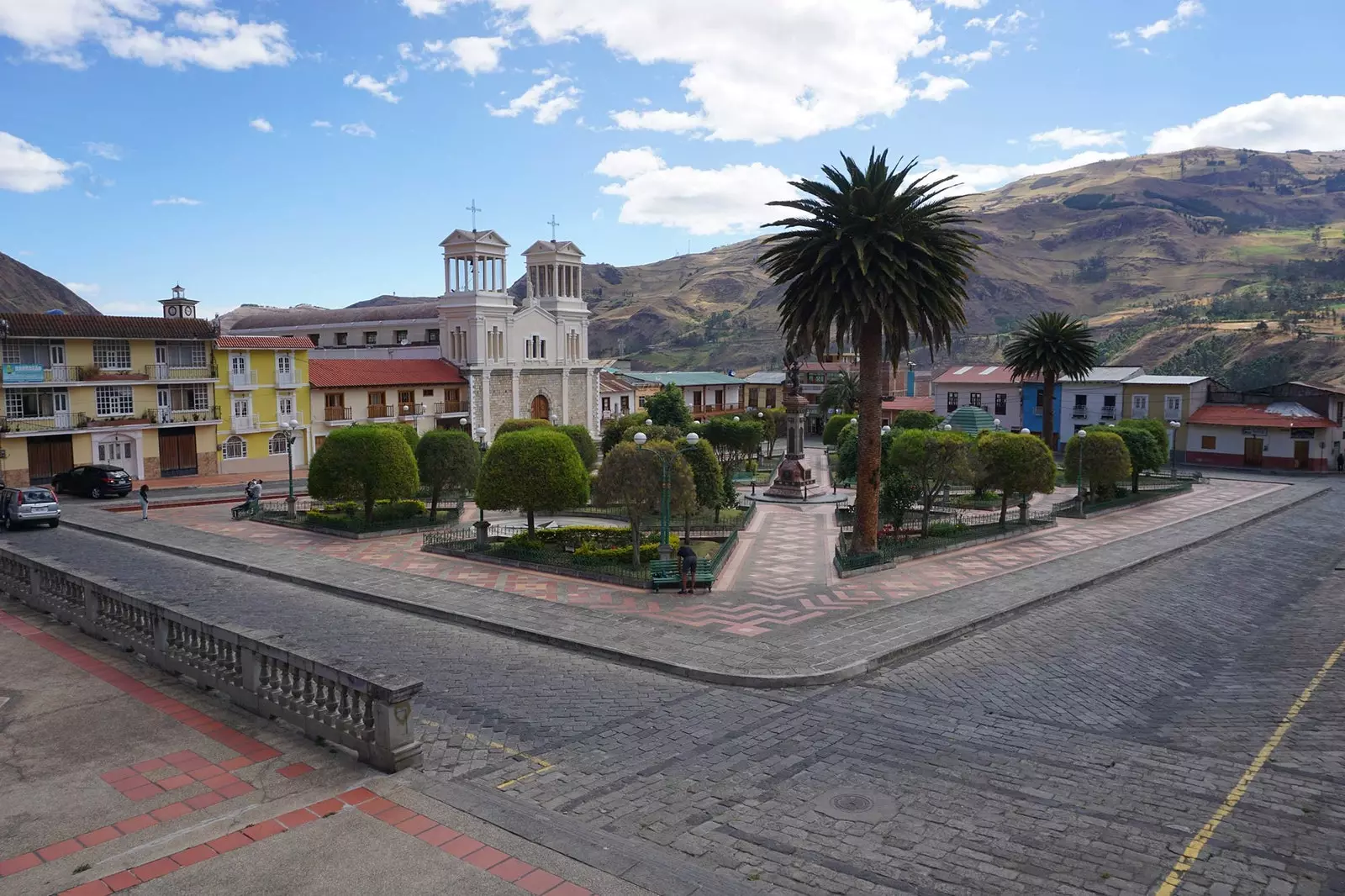
Alausi
Ecuadorian farms
One of the best known is the Hacienda Abraspungo , just about 15 minutes from downtown. In its gardens there are animals and plants from the region , like the fabulous polylepis or paper tree, whose bark crumbles into fine brown flakes.
In the eyes of the European it is a true rarity. In the rooms of the hacienda they are neatly stacked objects and pieces of art from the last century , as if it were a true Cabinet of Curiosities:
There are virgins from colonial times, wooden masks used by local communities for certain rituals, black and white photographs, leather suitcases and horse mounts called galapagos -which would later give the name to the famous giant tortoises-.
The decoration of the place is rustic and elegant, all worked in wood with a great aesthetic sense.
The next day it is much easier to travel the remaining two hours by land to get to Alausí. If it is possible, it should be done. the day trip , since it offers some genuine rural prints.
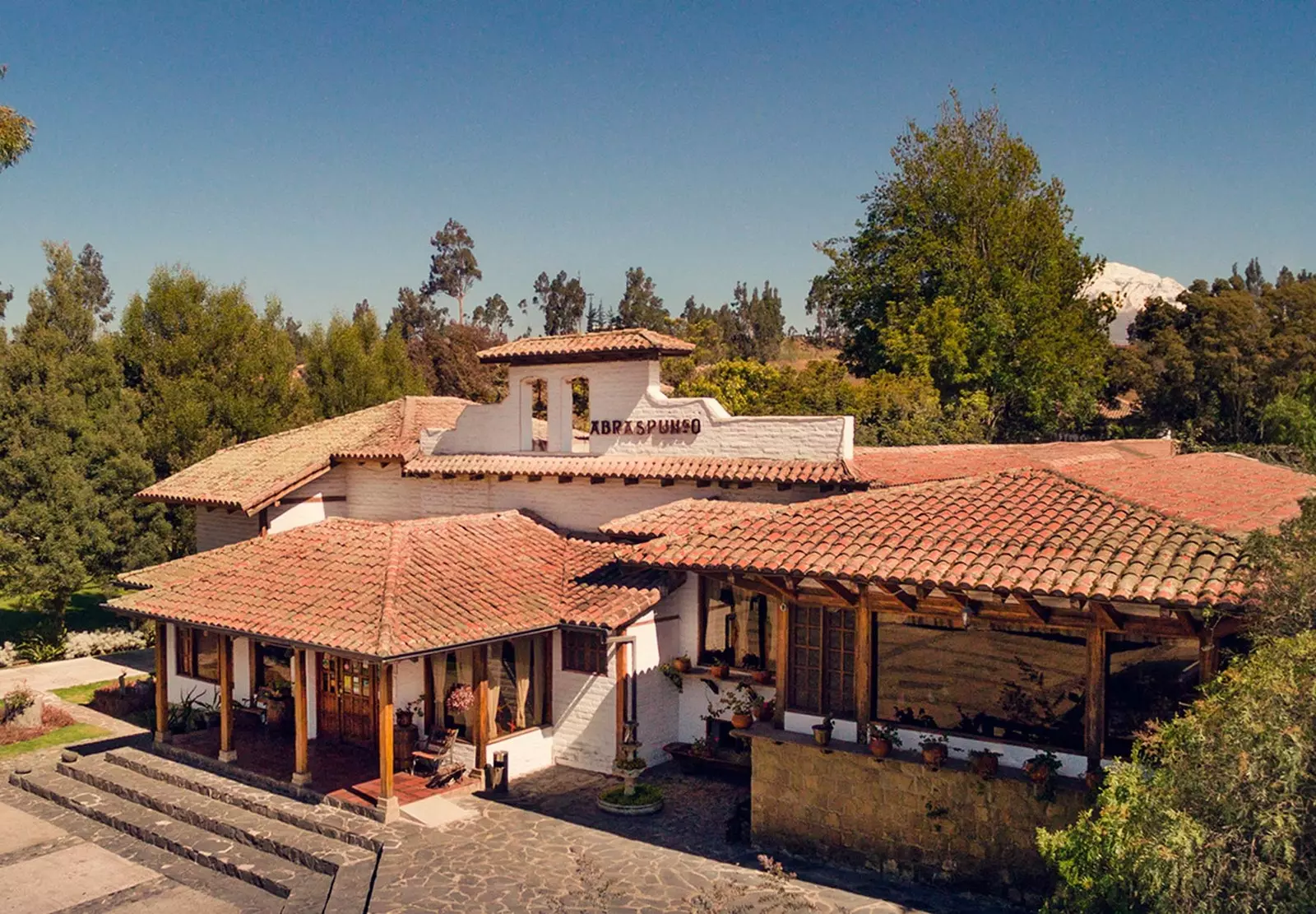
Hacienda Abraspungo
Suddenly a lady with the age of heaven appears accompanying a herd of sheep or a herd of vicuñas galloping across the moor. Or a man in traditional dress plowing the field with two oxen , scenes that due to the ravages of modernity are becoming extinct.
With a bit of luck, and if the day is clear, you will be able to contemplate Chimborazo (6,268 meters): the closest point to the sun on the planet . But we leave that story for another time.
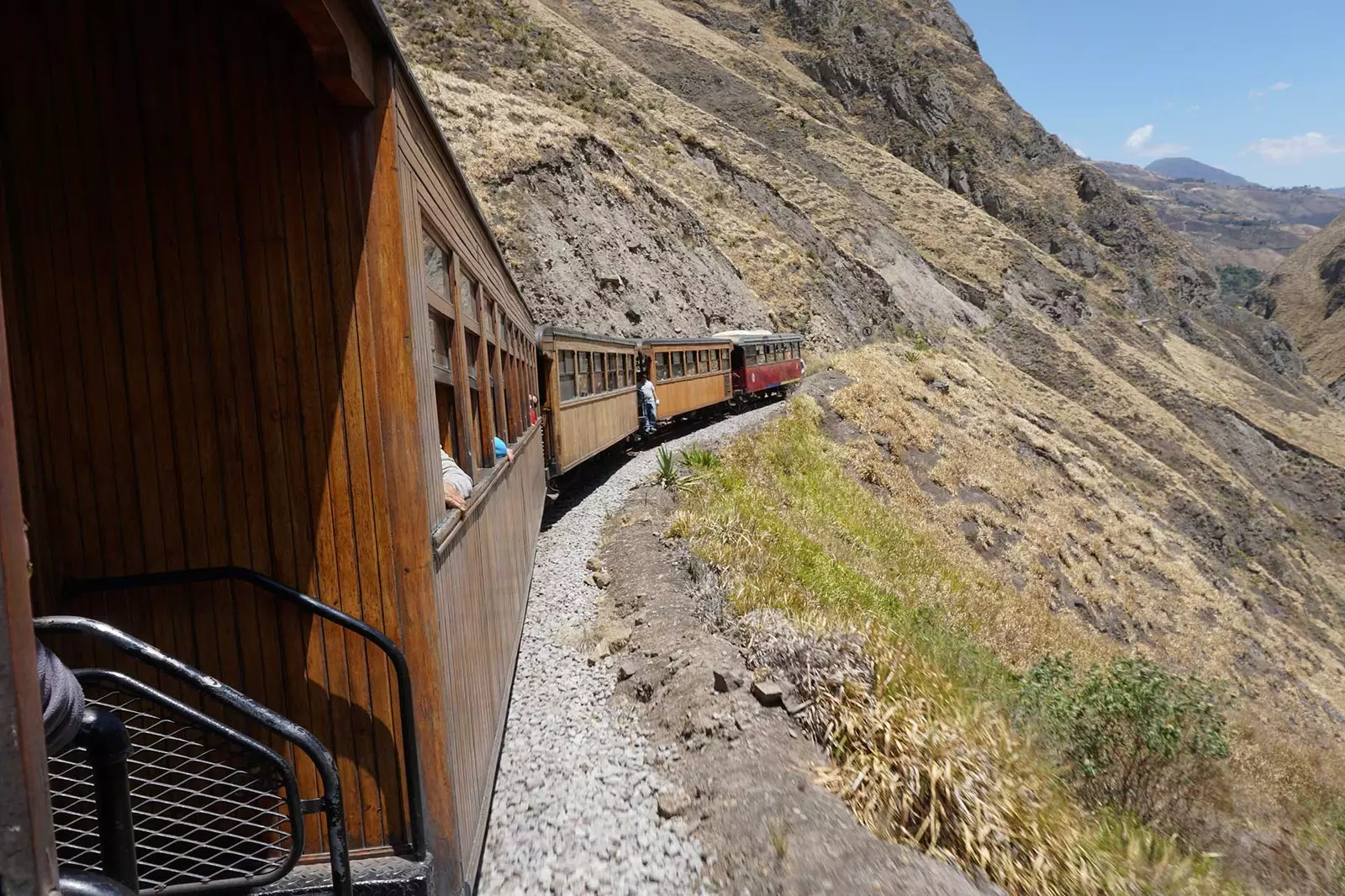
We go?
